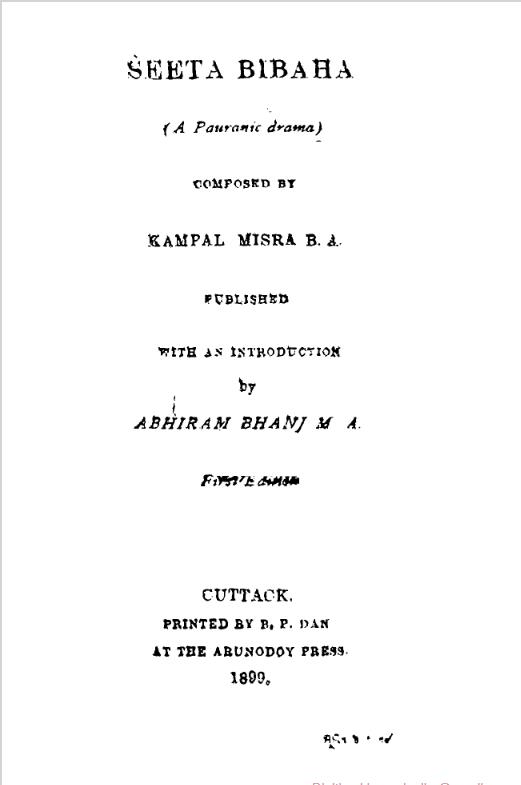Kavya Sita Bibaha, a remarkable work by Kamapala Misra, published in 1899, is a poetic exploration of the timeless themes of love, duty, and the complexities of relationships through the lens of one of the most revered stories in Hindu mythology: the marriage of Sita and Rama. This work stands out not only for its narrative structure but also for its rich language and cultural significance, reflecting the socio-religious milieu of late 19th-century India.
At its heart, Kavya Sita Bibaha reinterprets the legendary tale of Sita’s wedding to Rama, drawing from the epic Ramayana while infusing it with a contemporary sensibility that speaks to the readers of Misra’s time. The narrative unfolds with exquisite detail, capturing the majestic setting of Ayodhya, the grandeur of the royal wedding, and the intricacies of familial relationships that characterize the story.
Misra’s portrayal of Sita is particularly noteworthy. She is depicted not just as the passive, devoted wife but as a strong and perceptive character, whose thoughts and emotions are vividly brought to life. Through Sita’s perspective, the poem delves into the societal expectations of women during the period, highlighting the struggles she faces between personal desires and societal duties.
Kavya Sita Bibaha embodies the essence of classical Sanskrit poetics while being accessible to readers of the vernacular. Misra’s language is rich and lyrical, employing metaphors and similes that evoke the beauty of nature and the profundity of love. The rhythm and flow of the verses mirror the elegance of the story being told, enhancing the reading experience. The aesthetic appeal of the poetry is complemented by its philosophical underpinnings, allowing readers to reflect on the deeper meanings behind the romantic ideals presented.
Furthermore, Misra’s use of dialogue between characters brings a dynamic quality to the narrative. Conversations between Sita and Rama, as well as interactions with other key figures, reveal layers of emotion and conflict, making the characters relatable and their struggles palpable. This technique not only serves to advance the plot but also engages the reader in a more intimate understanding of the characters’ motivations.
The publication of Kavya Sita Bibaha came at a critical juncture in India’s history, when cultural revivalism and a resurgence of interest in traditional texts were at the forefront of the nationalistic movement. Misra’s work contributed to this revival by portraying an iconic story in a modern context, reintroducing its significance to a new generation. Through the lens of Sita and Rama’s union, readers could explore themes of duty, honor, and selflessness, which resonated with the socio-political climate of the time.
Moreover, Kavya Sita Bibaha has influenced subsequent literary works seeking to reinterpret epic tales through contemporary perspectives. Its impact continues to be felt, inspiring adaptations across various art forms, including theater, dance, and cinema.
Books Info
| Books name | Sita Bibaha |
| Author | Kamapala Misra |
| No Of pages | 115 |
| Publisher | Abhiram Bhanja M. A |
| Publication | 1899 |
| Printed At | The Arunoday Press |
| Distributor | NA |

